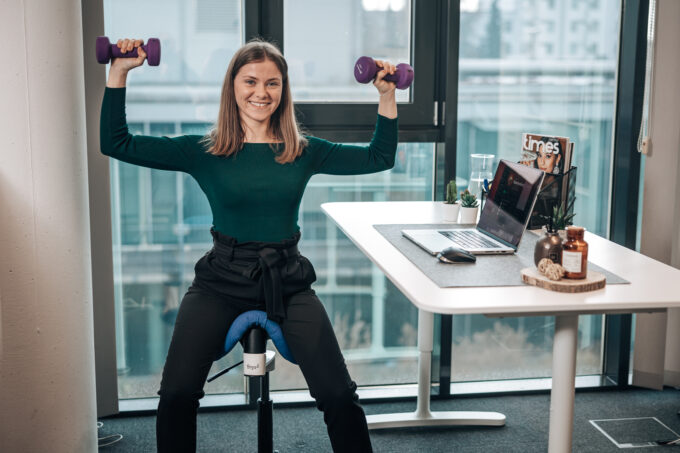More momentum in the office
The human body is not built to sit for hours on end. Agile office furniture concepts with sit-stand workstations that encourage movement, floor mats with 3D structures or lamps that remind you to change your posture help to make your time at work more active.

© AGR / Bergardi
The longer people sit at a desk without interruption, the greater their risk of cardiovascular disease. So it's high time to think about a more active office. And this is exactly what many employees want, as the Healthy Back Campaign (AGR) writes. Fortunately, there are now numerous intelligent solutions for an active working day.
Solutions for an ergonomic workplace
According to AGR, agile working activates the body. This is not only important at the workplace, but also when working from home, as half of employees move even less here than in the office. "You can easily ensure more movement by changing position. If you work standing up from time to time at a height-adjustable desk, you get your circulation going and activate important muscles," says Ulrich Kuhnt, sports scientist and chairman of the Federal Association of German Back Schools (Bundesverband deutscher Rückenschulen e. V.).
Ergonomic furniture has multifunctional and mobile applications, as the AGR emphasizes: seat blocks that provide short-term relief for legs and feet, multi-purpose chairs with a springy seat surface, desks with worktops of different heights for sitting and standing. Special floor mats with 3D structures activate muscles and nerves in the feet and legs.
Fit in the head with active chairs
Active chairs are a good way to encourage movement at the desk. With their multi-dimensionally movable seat surfaces, they encourage frequent changes of posture. "This keeps the core and deep muscles, which keep the spine stable, constantly moving and therefore trained," says Kuhnt. Another advantage is that the special chairs adapt to the movements and the back remains dynamically in its natural double-S shape - even when the upper body is leaning forward towards the table. "This promotes the nutrition of the intervertebral discs, relieves pressure on the internal organs and keeps the head fit," says the back expert. In this way, the active chairs also help to overcome the "afternoon slump".
Back-friendly seating experience
According to the AGR, a good active chair offers more than just movement. It should also be comfortable and at the same time support the alignment of the spine. The pelvis can move freely and the shoulder girdle and cervical spine can be actively balanced. This dynamic sitting is particularly effective in preventing back and neck problems, as the organization points out. "What is important here is a precise movement mechanism that puts even pressure on the spine," explains Thomas Riegler from Bergardi, a start-up company that develops innovative seating furniture for a back-friendly working day. "Our active chairs have a patented pendulum mechanism that combines a stable sitting position with active lower body movements. This strengthens the deep muscles along the spine," reports the co-founder of the family business, whose active-dynamic chairs were awarded the AGR seal of approval in 2023 for the special promotion of back health. "The AGR certification is a quality feature awarded by the expert jury that not only confirms the high ergonomic standards of our chairs, but also our commitment to a back-friendly sitting experience," says Riegler.
But which office furniture is recommended?
The AGR certifies back-healthy products from all areas of life, including office furniture such as ergonomic chairs, desks, monitors, keyboards and lights as well as complete movement-promoting office furniture concepts. This provides buyers with valuable guidance.
More information on modern office furniture concepts for agile working can be found on the AGR website: www.agr-ev.de/konzepte-fuer-mehr-bewegung-im-buero
Checklist for active chairs
- Active chairs should allow movement in all directions.
- The chairs should pick up and return the sitter's impulses. Swinging elements under the seat create effective movement stimuli for the spine and muscles.
- The active chairs should be stable and not tip over or roll away uncontrollably.
- For a good fit, the seat should be upholstered and individually height-adjustable. The ideal angle between the upper body and thighs is between 90 and 110 degrees - the thighs therefore fall slightly forward.
- Armrests and a pelvic support also help to keep the spine upright.
All the requirements for a back-friendly active office chair here:
www.agr-ev.de/aktiv-buerostuehle









